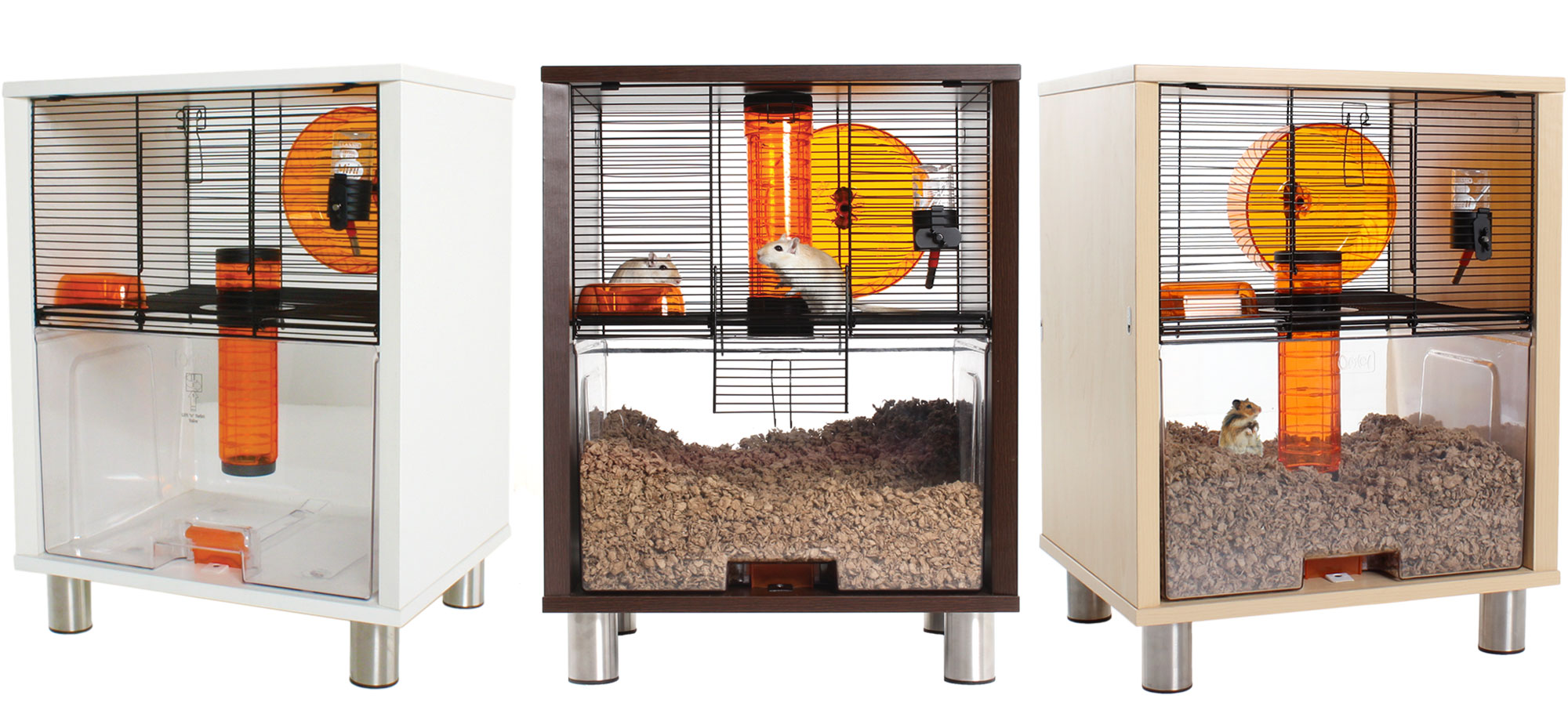There are lots of different types of hamster cage, from modern options such as the Qute, to more traditional cages such as those available in your local pet store. Different hamster species have slightly different cage requirements, but as a general rule you need to purchase the largest and most practical cage that your budget can manage.
The species of hamster you choose, and the number of them you want to keep, dictate which kind of cage you need. The most popular breed, the Syrian or Golden, cannot be kept in pairs or groups, but still needs a large enclosure. For more information on which hamsters you can keep together, have a look at the Sociable Hamsters page of this guide.
The first thing to do before taking delivery of your new cage is to decide where it’s going to go. Cages differ in width, length and height, so you need to make sure the measurements all tie up.
A good rule of thumb is to ensure a minimum floor space of 30 inches long by 20 inches wide, with a cage height of at least 10 inches.
The Hamster Qute Enclosure
Some hamster cages look old fashioned and bulky, in contrast to the modern Qute (see photos above). This range is designed to fit into its surroundings as a stylish piece of furniture, slotting neatly and attractively into your home. It comes in different colors, and some models have drawers to keep your hamster bits and pieces tidied away conveniently close to the action.
Unsuitable Hamster Cages
It’s a good idea to look at reviews of the enclosure you intend buying, or asking someone who already keeps hamsters for a recommendation. Some of the hamster cages on sale are poor quality, and may have sharp or rough parts that can injure your pet, or may be so flimsy that the industrious rodent can nibble and push his way out when you’re not looking. But the commonest issue is for a cage to be too small – a mouse cage offered as a Syrian hamster cage, for example. Some do not have enough climbing space.
Hamsters are notorious escape artists, and you’d be surprised how easily they can slip through the smallest of spaces. If they make a bolt for freedom and head under the floorboards, it will be very tricky to retrieve them!
Remember, the enclosure you’re investing in is likely to be the hamster’s home for its entire life, so it’s best to make sure it’s a good one.

Comments
Alison, 10 May 2020
Why? In this day and age, why? Totally unsuitable for any rodents! Doesn't even meet the minimum size requirements! Learn about animals or design furniture instead! Epic fail!